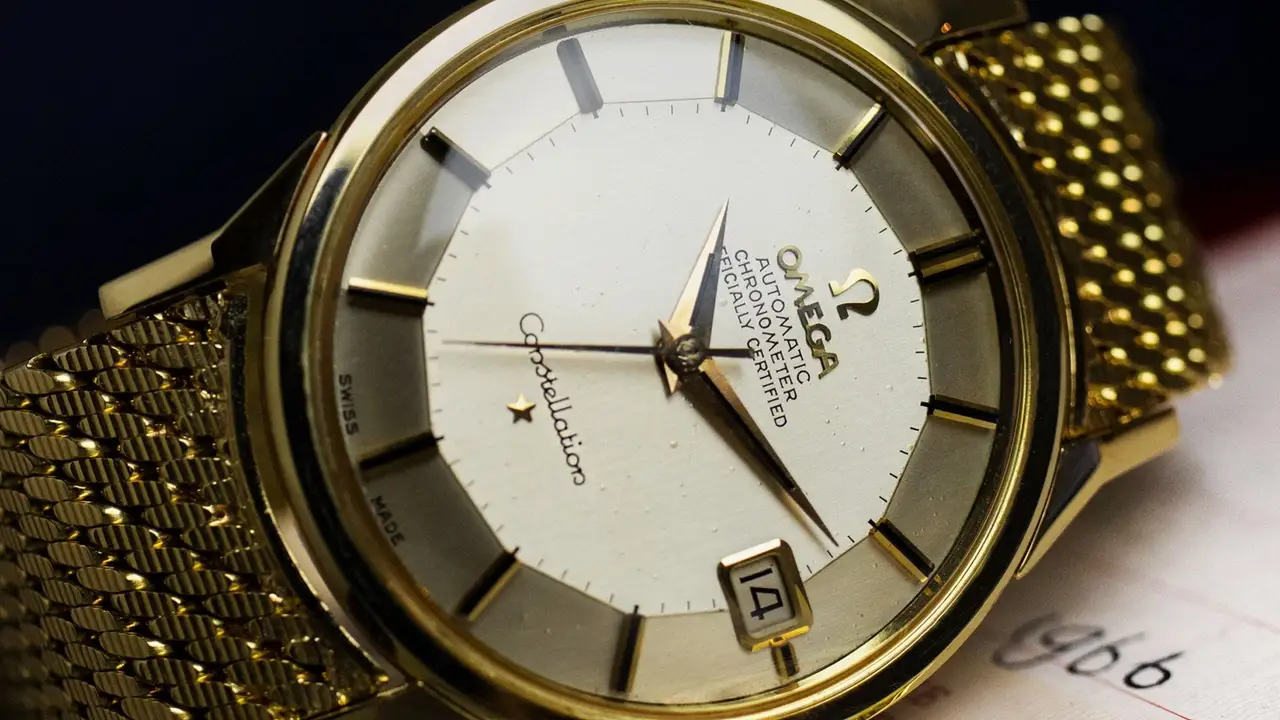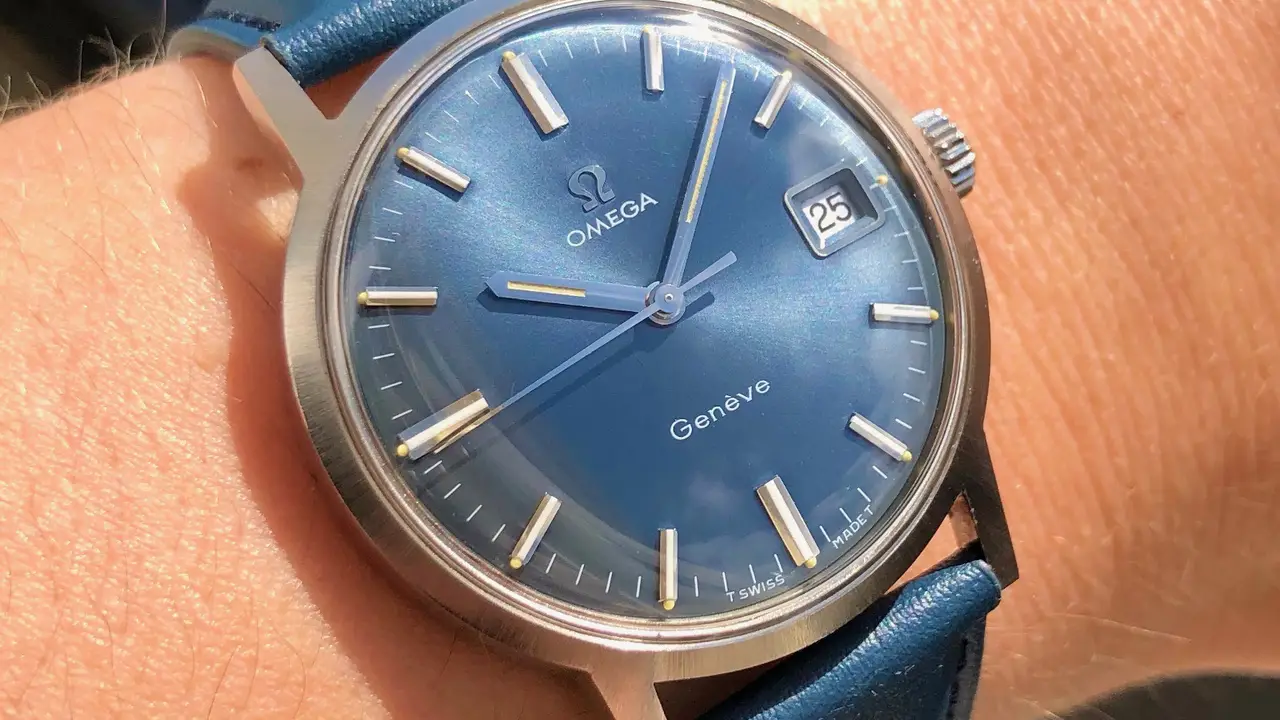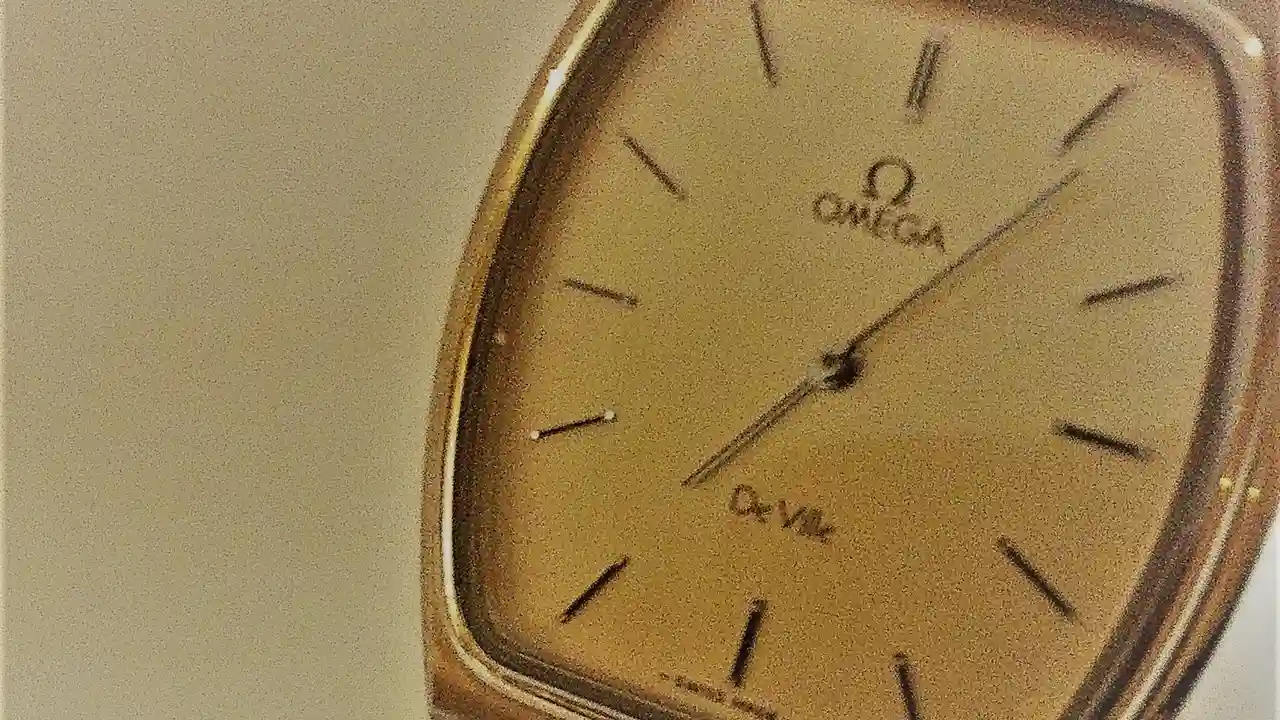Vintage Omega Constellation_ A Look at Pie Pan Dials and More
Take a closer look at vintage Omega Constellation watches focusing on the iconic pie pan dials and other distinctive features. Learn about their value and collectibility.

Omega Constellation History A Legacy of Precision and Style
The Omega Constellation is a name synonymous with precision, elegance, and horological innovation. Introduced in 1952, the Constellation quickly established itself as Omega's flagship line, representing the pinnacle of their watchmaking capabilities. Unlike tool watches like the Speedmaster or Seamaster, the Constellation was designed as a dress watch, emphasizing refined aesthetics and chronometric performance. Its history is intertwined with Omega's pursuit of excellence in observatory trials, where their movements consistently achieved top honors. These achievements were directly translated into the Constellation line, ensuring that each watch met rigorous accuracy standards.
Decoding the Pie Pan Dial What Makes it So Special?
The 'pie pan' dial is arguably the most recognizable feature of vintage Omega Constellation watches. This distinctive dial shape, characterized by its sloping edges resembling an inverted pie pan, adds depth and dimension to the watch face. The pie pan dial wasn't just an aesthetic choice; it also served a functional purpose. The angled surface enhanced legibility by minimizing reflections and maximizing light capture. Several variations of the pie pan dial exist, including those with 'dog leg' lugs and different marker styles. The dial's condition is a crucial factor in determining a vintage Constellation's value, with pristine examples commanding a premium.
Key Features to Look for in a Vintage Omega Constellation
When venturing into the world of vintage Omega Constellations, several key features can help you identify desirable and collectible models:
- The Movement: Look for chronometer-grade movements, often designated with 'Chronometer Officially Certified' on the dial. Calibers like the 561, 564, and 505 are highly regarded for their accuracy and reliability.
- The Case: Constellations were available in various case materials, including stainless steel, gold-plated, and solid gold. Check for sharp edges and minimal polishing, as excessive polishing can diminish the watch's original character.
- The Dial: As mentioned earlier, the pie pan dial is a significant feature. Examine the dial for any signs of damage, such as staining, discoloration, or refinishing. Original, untouched dials are highly prized.
- The Observatory Logo: The caseback of a Constellation typically features an observatory logo with eight stars, representing Omega's eight chronometer records at the observatory trials. Ensure that the logo is crisp and well-defined.
- The Crown and Crystal: Check that the crown is original and bears the Omega logo. The crystal should be free of cracks and scratches.
Spotlight on Specific Vintage Omega Constellation Models
Let's explore some specific vintage Omega Constellation models that are particularly sought after by collectors:
Omega Constellation 168.005 (1960s)
The 168.005 is a classic example of a vintage Constellation, featuring a stainless steel case, a pie pan dial, and the Caliber 561 movement. Its clean lines and timeless design make it a versatile choice for both casual and formal wear. A well-preserved 168.005 can be found for around $1,500 to $3,000, depending on its condition and originality. Imagine wearing this to a business meeting or a sophisticated dinner – it exudes understated elegance.
Omega Constellation 14355 (1960s)
This model often features a gold-capped or solid gold case, adding a touch of luxury. The 14355 typically houses the Caliber 505 movement and features a pie pan dial with dauphine hands. Due to its gold content, the 14355 commands a higher price, ranging from $2,500 to $5,000 or more. Picture this on your wrist at a wedding or special occasion, radiating timeless sophistication.
Omega Constellation 'C-Shape' (1960s/70s)
Designed by Gerald Genta, the 'C-Shape' Constellation features a distinctive case shape resembling the letter 'C.' This model is a departure from the traditional Constellation design, offering a more modern and angular aesthetic. Prices for the 'C-Shape' Constellation range from $800 to $2,000, making it a relatively affordable entry point into vintage Constellation collecting. Envision wearing this while exploring a modern art museum, showcasing your appreciation for avant-garde design.
Comparing Vintage Constellations What to Consider
When comparing vintage Constellations, consider the following factors:
- Condition: The overall condition of the watch is paramount. Look for examples with minimal wear and tear, original parts, and a well-maintained movement.
- Rarity: Certain dial variations, case materials, or movement configurations are rarer than others. Research the specific model you're interested in to understand its rarity and potential value.
- Provenance: Knowing the history of a watch can add to its value and desirability. If possible, try to obtain information about the watch's previous owners or any significant events it may have been associated with.
- Price: Compare prices from various sources, including online marketplaces, auction houses, and reputable vintage watch dealers. Be wary of deals that seem too good to be true, as they may indicate a fake or heavily compromised watch.
The Vintage Omega Constellation Market A Collector's Perspective
The vintage Omega Constellation market is thriving, with collectors drawn to the line's rich history, elegant designs, and reliable movements. Prices have been steadily increasing in recent years, making vintage Constellations a potentially lucrative investment. However, like any collectible market, it's essential to do your research and buy from reputable sources. Building relationships with knowledgeable dealers and fellow collectors can provide valuable insights and help you avoid costly mistakes.
Southeast Asia A Growing Market for Vintage Constellations
The Southeast Asian market for vintage watches, including Omega Constellations, has been experiencing significant growth. Countries like Singapore, Malaysia, and Thailand have a strong appreciation for fine timepieces and a growing community of collectors. However, it's important to be aware of the specific challenges and opportunities present in this region. Counterfeit watches are prevalent, so thorough authentication is crucial. Additionally, understanding local preferences and cultural nuances can help you navigate the market more effectively.
Where to Buy Vintage Omega Constellations Safely
Purchasing a vintage Omega Constellation requires careful consideration. Here are some recommended channels:
- Reputable Vintage Watch Dealers: Dealers specializing in vintage watches often have expertise and can guarantee authenticity. They might charge a premium, but the peace of mind can be worth it.
- Online Marketplaces: Platforms like eBay and Chrono24 offer a wide selection. However, exercise caution and scrutinize listings. Check seller reviews and ask detailed questions. Always request high-resolution photos.
- Auction Houses: Auction houses like Christie's and Sotheby's occasionally feature vintage Omega Constellations. These can be a great source, but do your homework and inspect the watch in person if possible.
- Watch Forums and Communities: Online forums dedicated to watch collecting can be valuable resources for finding watches and connecting with knowledgeable collectors.
:max_bytes(150000):strip_icc()/277019-baked-pork-chops-with-cream-of-mushroom-soup-DDMFS-beauty-4x3-BG-7505-5762b731cf30447d9cbbbbbf387beafa.jpg)






